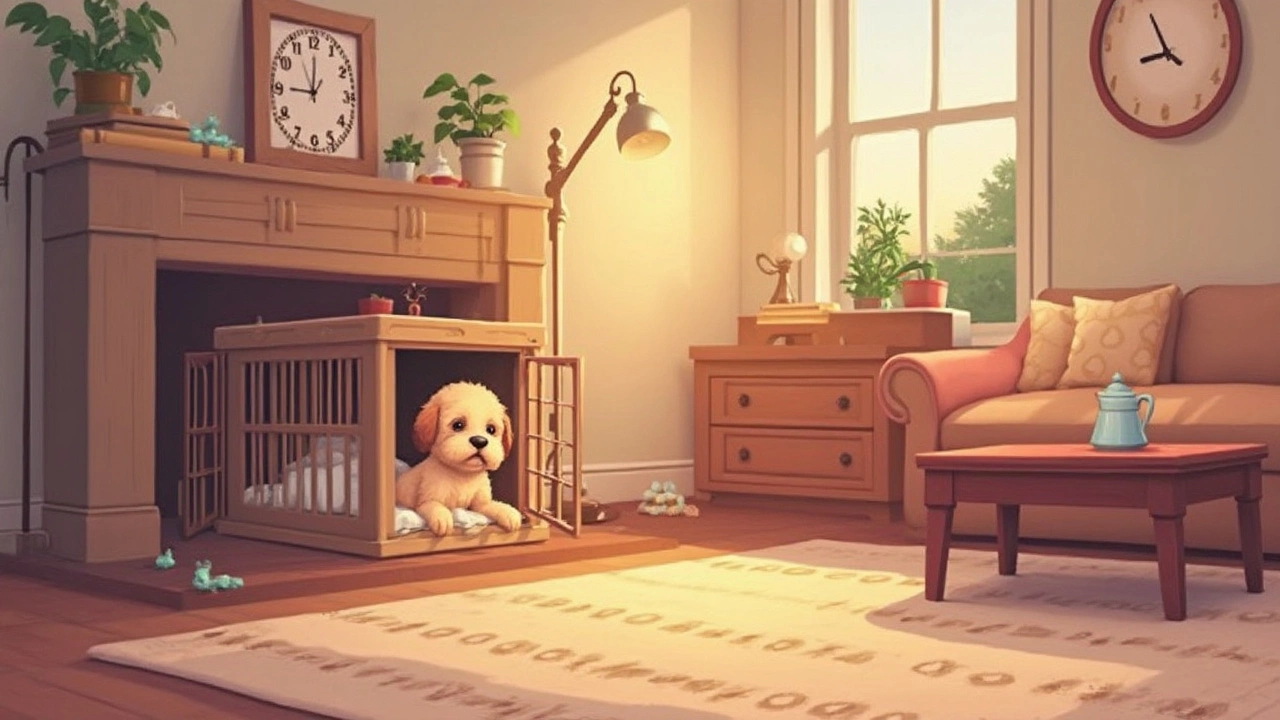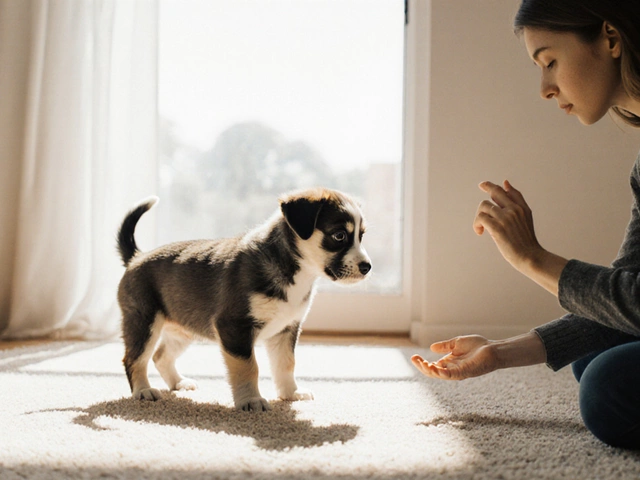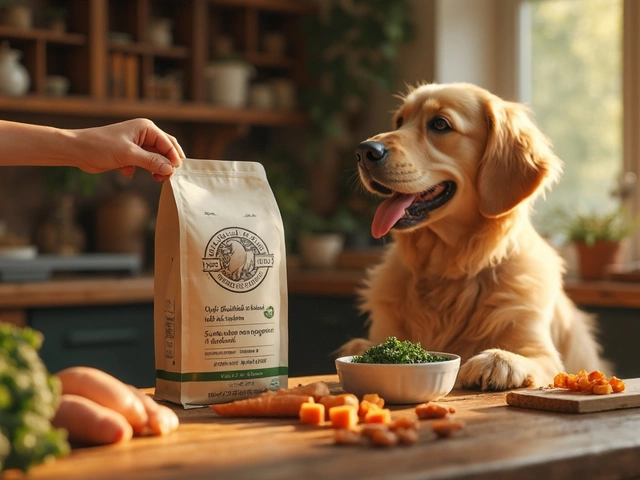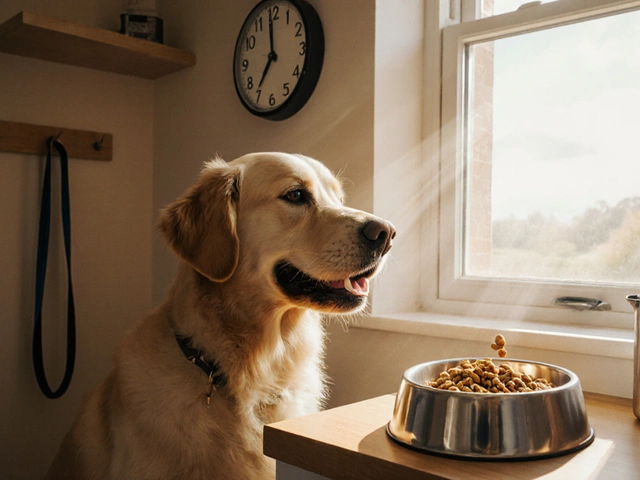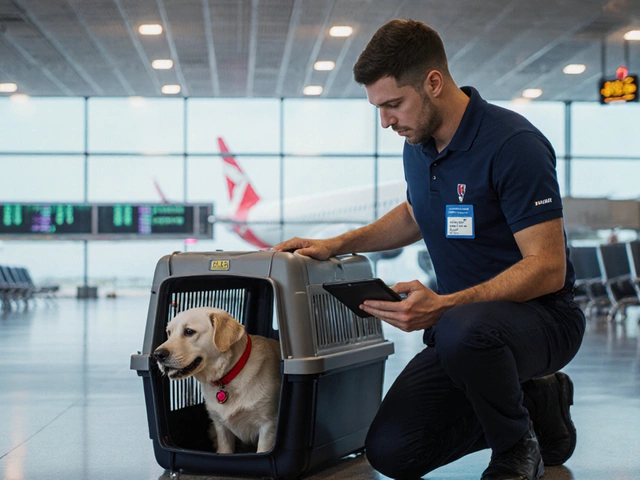So, you're a new puppy parent? Congrats! It's a fun, chaotic ride from here. One big question that's probably crossed your mind is crate training, especially at night. Is it a safe place for your furball to sleep, or just a tiny, puppy prison? Well, the truth is, a crate can be your best friend if used right.
Crate training isn't just about domestication. Think of it as helping your puppy embrace its natural instincts. Wild canines dig cozy dens where they feel secure, and your puppy can have its own snug spot in a crate. The trick is to make it feel like a home, not a cage.
Choosing the right crate is crucial. It shouldn't be too big or too small—just enough space for your puppy to stand up, turn around, and lie down. Line it with soft bedding to amp up the comfort. Throw in a favorite toy or two to keep things interesting.
Now, before you push that door shut, remember the golden rule of patience. Puppies aren't born loving crates. Start slowly, introducing your pup to its new space during the day with the door open. Over time, and with a bit of effort, night crating can become as automatic as brushing your teeth.
- The Benefits of Crate Training at Night
- Choosing the Right Crate
- Creating a Cozy Crate Space
- Training Tips for Nighttime Crating
- What To Do If Your Puppy Hates the Crate
The Benefits of Crate Training at Night
Crate training your puppy at night can be a game-changer for you and your pup. For starters, think of it like giving your puppy their very own bedroom. It's a place where they can retreat for some much-needed downtime if they're feeling overwhelmed or just need to get away from the chaos of humans.
One major benefit is that it helps with puppy sleeping habits. Many puppies feel anxious in a new environment, and a crate gives them a consistent and comforting spot to deal with those new vibes. Over time, your puppy will associate the crate with calm and safety, which is a huge win for puppy training.
It also makes your life easier! If you're tired from chasing your puppy all day, crating them at night keeps them safe and out of trouble while you get your beauty sleep. It's peace of mind knowing your pup isn't chewing your favorite sneakers while you're counting sheep.
Let's not forget the potty training perks. Puppies typically don't want to soil their sleeping area. By crating them at night, you can establish a routine for bathroom breaks, helping your pup learn control and consistency.
Not convinced? Here's a cool fact: puppies bred from smaller breeds usually get the hang of this around 6 months, while bigger breeds might take up to a year. The crate can expedite this, cutting the guesswork out of 'when will my puppy finally sleep through the night?' Plus, when used well, a crate can transform those random night-time whines into peaceful snoozes.
So, if you're asking if you should use a night crate for puppy, the short answer is yes! It's like a handy tool in your puppy-raising toolbox.
Choosing the Right Crate
Alright, let’s get down to business on picking the perfect crate for your little buddy. Not just any crate will do. It’s got to fit like a charm and offer safety, comfort, and ease of use.
First up, size matters. A puppy crate should give your pup enough room to stand up, turn around, and stretch out comfortably, but not so big they might decide to create a 'bathroom corner' within it. You want your crate training linked to a happy and clean space.
Thinking about durability? Wire crates are popular and practical because they’re strong and often come with dividers. This means you can adjust the size of the living space as your puppy grows without buying a new crate every few months.
Consider portability too. Are you often on the go? A lightweight plastic crate might be easier for travel purposes. Just make sure it's well-ventilated for those warm days.
Beyond the structure, it's time to think comfort. A crate isn’t just a holding cell. You’ll need some cozy bedding, like a soft mat or blanket, padded enough to resemble a snug little dog bed. This helps the crate feel more inviting and less like a hard, cold box.
- Avoid using too much material that a puppy could chew up and potentially swallow.
- Pick safe, non-toxic materials.
- Consider washable accessories for easy clean-up.
If you’re still unsure about what's available, a store visit can offer a chance to see the crates and get advice from experts. They might even have those fancy crate styles that double as tables, blending seamlessly with your home decor.
Striking a balance in comfort, safety, and style isn't just about calming your new pup but also connecting them to a routine that makes nighttime crating the smoother choice in puppy training.
| Crate Options | Pros | Cons |
|---|---|---|
| Wire Crate | Adjustable, breathable | Heavier, visible |
| Plastic Crate | Portable, cozy | Less airy, limited size options |

Creating a Cozy Crate Space
Turning your pup’s crate into a cozy den isn’t rocket science, but it does take a bit of planning. A little effort now means that your furry buddy will feel right at home, especially through the night.
First things first, location. Where you place the crate matters. Ideally, set it up in a quiet spot away from too much hustle and bustle, but not too isolated. Your puppy should still feel part of the family, just with their own little retreat.
Next up, bedding. A soft, washable mat or blanket can do wonders for comfort. Avoid anything that can be easily chewed and swallowed. Some folks swear by using old t-shirts for bedding, as familiar scents can be super comforting.
Your puppy toys can also play a starring role. Choose toys that are safe to leave overnight—nothing with small parts that could be a choking hazard. These toys will help keep your pup entertained if they wake up before you do.
Temperature is also key. Too hot or too cold, and your puppy might get restless. Since they can’t control the thermostat, check the room's temperature. If the area is prone to being drafty, consider a crate cover for extra warmth.
Finally, let's talk about vibes. Make the space inviting. If your pup is particularly nervous, a blanket draped over a portion of the crate can create a cave-like atmosphere, enhancing that secure den feel. But remember, your puppy should still get plenty of airflow.
- Place the crate in a quiet, yet sociable location.
- Use soft, durable bedding.
- Include safe, comforting puppy toys.
- Ensure the room is at a comfy temperature.
- Create a den-like atmosphere without obstructing airflow.
So, roll up your sleeves, get creative, and turn that crate into a comfy haven. Your pup (and your sleep schedule) will thank you for it!
Training Tips for Nighttime Crating
Alright, so you're on board with the idea of using a crate at night. But how do you actually get your puppy to love its new bedtime spot? Don't worry, there's a method to this madness. It starts with preparation and understanding, not only for your furry pal but for you too.
Before the first night, prep your puppy by introducing the crate during the day. Toss in some treats to encourage him to go inside, and let him explore at his own pace. Keep the door open at first so he doesn’t feel trapped.
Establish a bedtime routine. Puppies, much like kids, thrive on routine. Start with a calming activity, like a slow walk or some gentle play. Avoid any rowdy games right before bed; you wouldn't want to go to sleep super pumped, right?
When it’s time to tuck your puppy in for the night, lead him to the crate with a treat in hand. Once he’s inside, say a command like "bedtime" or "crate" to help him connect the routine with the action. Consistency is key.
- Ensure the crate is placed in a quiet corner where your puppy can relax without too many distractions.
- Keep noise and light to a minimum; a quiet room helps a lot.
- Cover the crate with a light blanket to mimic that comfy den feel.
Now, all puppies have tiny bladders. Expect some middle-of-the-night bathroom wake-ups. Try to take your pup out before bedtime and be patient if he cries during the night; he might just need a quick potty break.
If your pup is restless even after a bathroom trip, wait a bit before opening the crate. You don’t want him to think whining is a ticket to freedom. Offer a soft "shh" or "it's okay" to reassure him. In time, he'll learn that the crate is a safe, pleasant place to be for the night.
Lastly, remember it's all about making your puppy feel comfortable and secure. Treat nighttime crating with patience, love, and a dash of persistence, and soon it'll be a breeze.
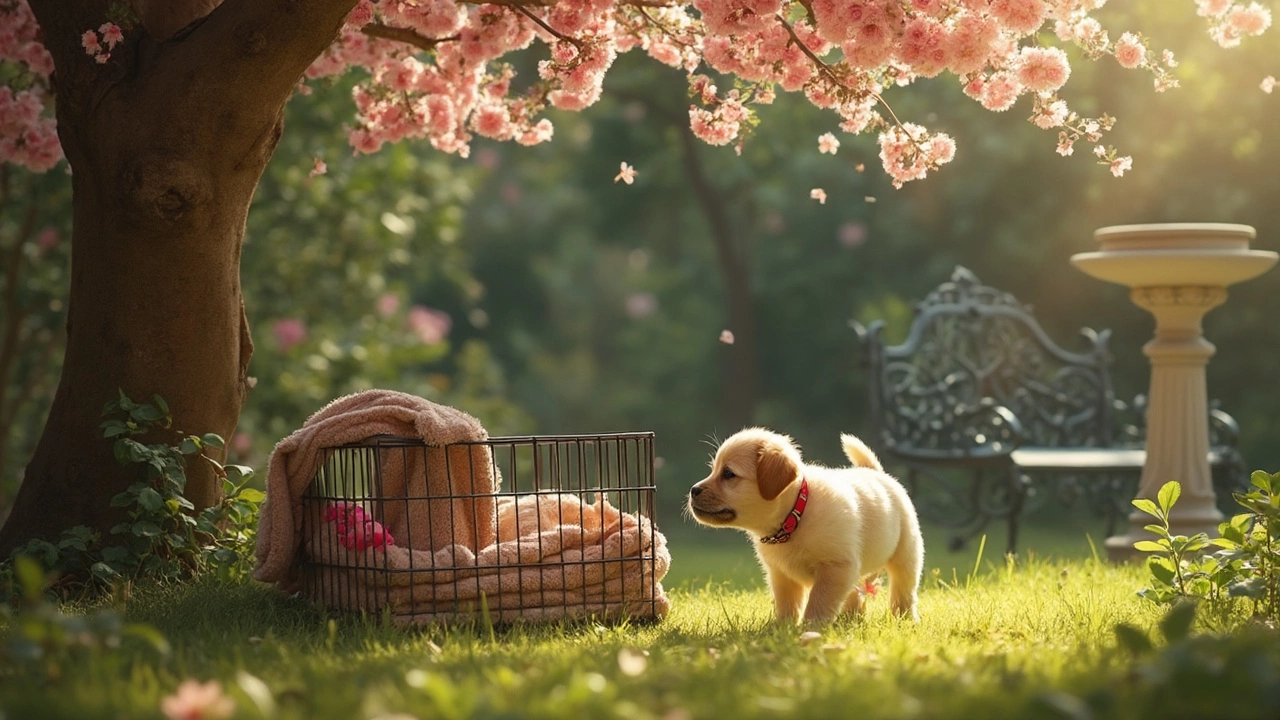
What To Do If Your Puppy Hates the Crate
Alright, so not every pup takes to the crate like it's the best thing since sliced bread. If your puppy's throwing a tantrum every time you even suggest the crate, it might feel a bit overwhelming. But don't worry, I’ve got some tried-and-tested tips to help ease that transition.
First off, make the crate a happy place. Sprinkle some treats inside to entice your pup. You want them to associate the crate with good stuff. Remember, puppy crate training is as much about your patience as it is about their learning.
“Start with short periods in the crate and gradually increase the time as your puppy becomes more comfortable,” advises Dr. Emily Ward, a well-known pet behaviorist at the Canine Club.Keeping these sessions light and positive will build confidence over time.
If your puppy's still resistant, consider playing some soft music or using a machine that mimics a heartbeat—dogs often find these sounds soothing. Also, make sure the crate is located in an area where they feel part of the family action but not overwhelmed by noise.
Here's a quick roadmap to make the process smoother:
- Begin by leading them inside with a tasty treat, leaving the door open.
- Gradually work up to closing the door, just for a minute, and then open it before they get anxious.
- Increase the closed-door time as they get comfortable, maintaining a calm and inviting tone when you let them out.
If things aren't progressing, don't hesitate to introduce toys designed for puppy training. Chew toys like Kongs can be filled with treats, offering both distraction and a tasty reward.
Finally, if the struggle persists and is causing undue stress, chatting with a vet or a professional trainer can be beneficial. They can provide personalized tips catering to your pup’s specific demeanor and needs. Patience and persistence are key here—before you know it, your little buddy might just find the crate a second home!

